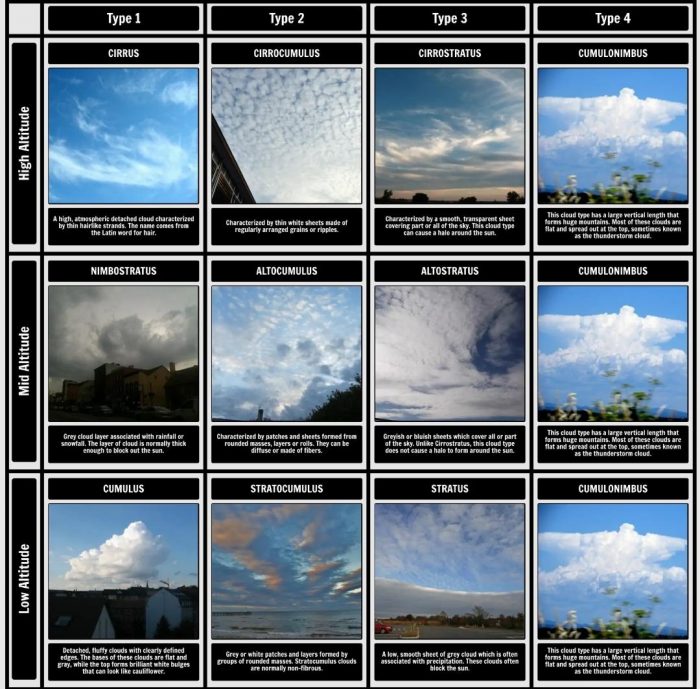
There are many different types of clouds, but only a few can be seen from the ground. The ones that we see from our vantage point are called low level clouds, and they’re mostly made up of water droplets. High altitude clouds are not as common because they tend to form at high elevations where it’s colder than in lower parts of the atmosphere. Mid-altitude clouds can form when air sinks or warms up near the top of mountains or over large bodies of water like lakes and oceans.
High Altitude Clouds
High altitude clouds are the highest in the sky, and can be up to 20,000 feet above sea level. They’re usually white or grey and form in wispy strands or patches.
They include:
- Cirrus–thin wisps of cloud that look like strings of cotton wool
- Cirrocumulus–small white puffs that sometimes resemble sheep’s wool
Mid Altitude Clouds
Mid altitude clouds are the most common type of cloud, and can be found at altitudes between 6,500 feet (2 km) and 20,000 feet (6 km). They’re also known as “middle clouds” because they’re located in between cirrus and cumulus. There are four different types of mid-level clouds: cirrus, altocumulus, altostratus and stratocumulus. Cirrus clouds are thin strands that form when water vapor becomes ice crystals; they’re best seen on sunny days with light winds or no wind at all. Altocumulus clouds look like puffy patches of cotton balls floating over your head–they’re made up of water droplets that have frozen into ice crystals but haven’t coalesced into larger masses yet. Altostratus means “high stratus”; these sheets sometimes appear grayish due to their high concentration of dust particles mixed with water droplets or ice crystals within them (usually caused by wildfires). Stratocumulus means “grayish-white layer”; these billowy masses often resemble fog banks without being so dense as fog banks tend to be – you’ll see them along coasts where ocean breezes meet land breezes from inland areas nearby
Low Altitude Clouds
Low-level clouds are the most common type of cloud, with upwards of 80% existing at altitudes below 6,500 feet (2,000 m). They form when moisture condenses into droplets or ice crystals on particles in the air. Low-level clouds can be classified into three types: cumulus congestus (which means “heaped”), stratus fractus (“broken”), and stratocumulus undulatus (meaning “wavy”).
This was a brief overview of some of the different types of clouds. There are many more types, but these are some of the most common ones you’ll see as you look up at the sky.
